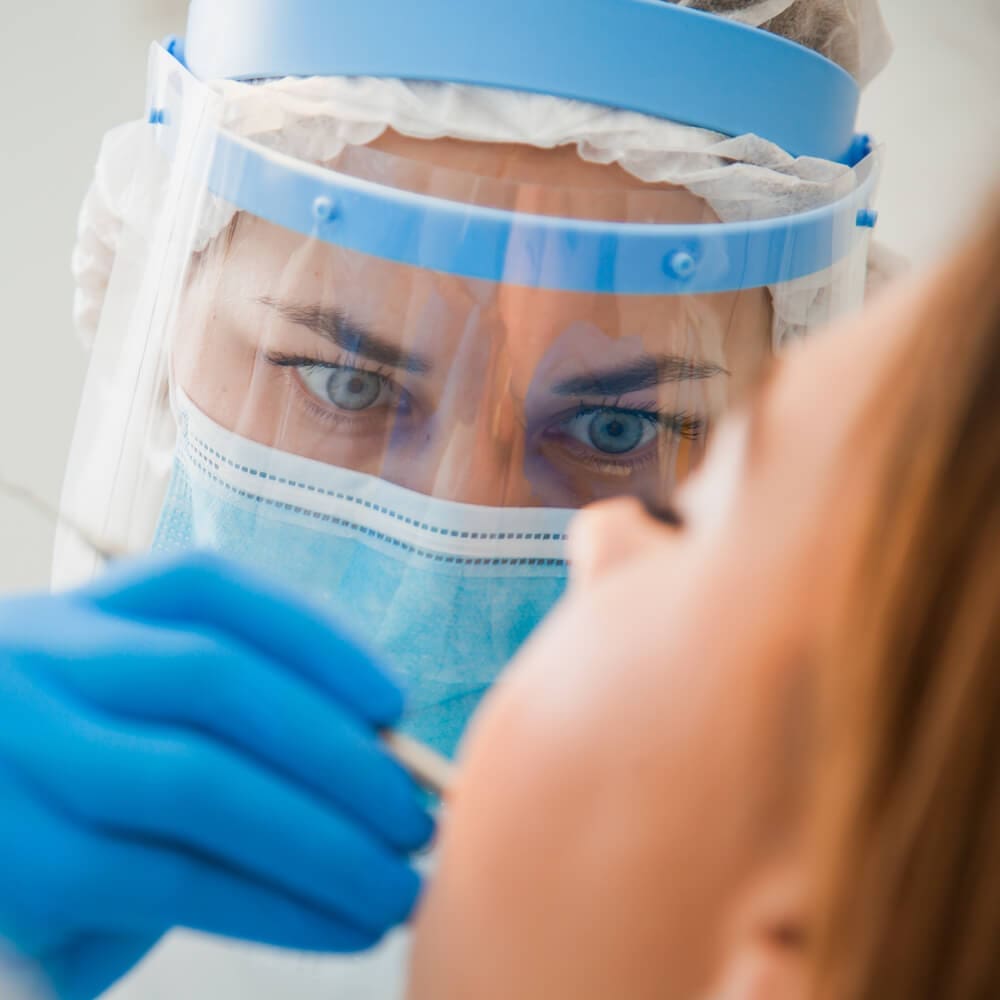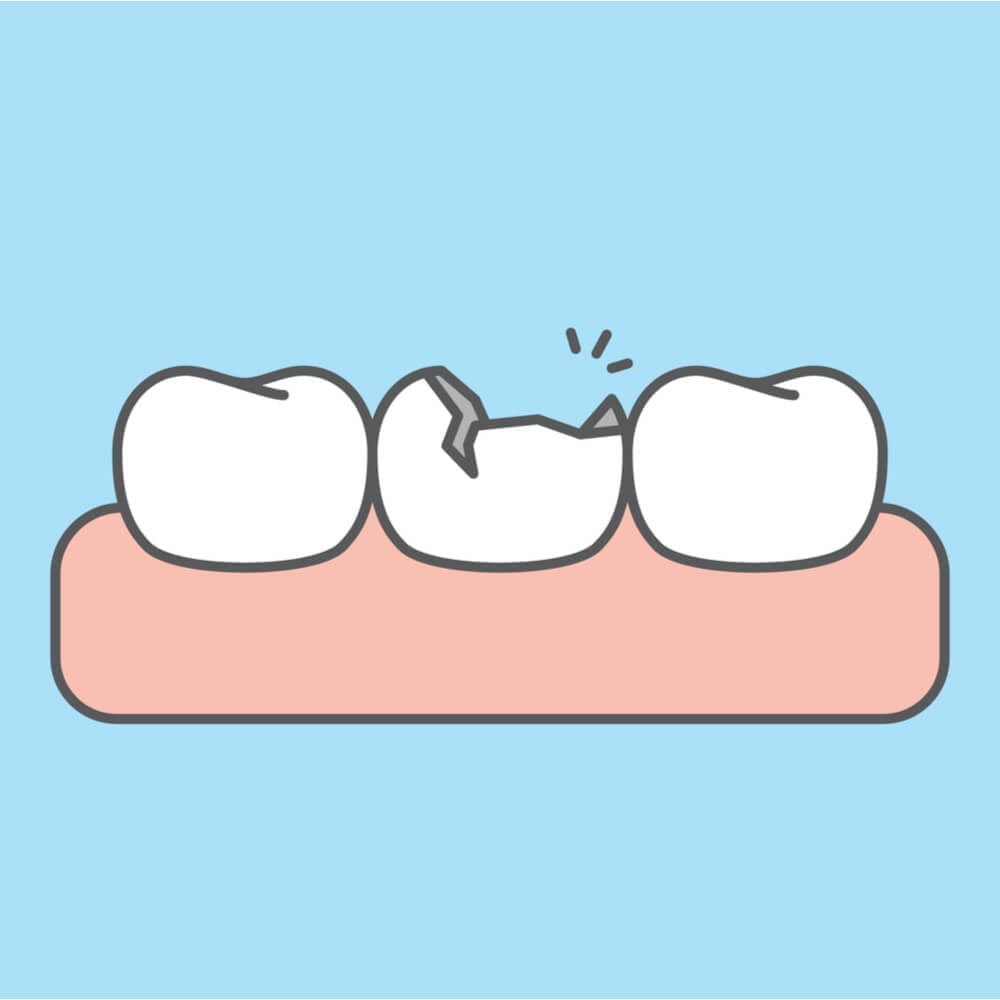So you’ve got a cracked tooth — and you’re not sure what to do next. That’s understandable! A cracked tooth is no fun, but fortunately, modern dentistry has plenty of pain-free answers for this fairly common dental problem.

What kind of cracked tooth do you have?
Chipped teeth are the most common dental injury, usually occurring from unexpected force to the mouth or chomping down on something hard. Occasionally, the missing piece of tooth can be reattached or replaced by a crown or tooth-colored filling. Chipped teeth require immediate attention, however, to prevent the injury from worsening.
Maybe you woke up yesterday and noticed that you have a tiny fault line running through a front tooth for the first time. You might have a craze line, a minimal crack compromising the outer layer of enamel. Many adults have this sort of cracked tooth and have never even noticed, as there’s generally no pain or other issues except for cosmetic concerns.
 An ordinary cracked tooth usually appears with a crack that starts at the edge or chewing area of the tooth. These cracks can spread, but a root canal procedure can save the tooth if the crack hasn’t reached the pulp, soft tissue, and nerves inside the tooth. But if the crack goes below the gum line, extraction will be necessary. Early diagnosis and treatment minimize damage. The one thing you can’t do for long with a cracked tooth? Ignore it. A cracked tooth will definitely get worse.
An ordinary cracked tooth usually appears with a crack that starts at the edge or chewing area of the tooth. These cracks can spread, but a root canal procedure can save the tooth if the crack hasn’t reached the pulp, soft tissue, and nerves inside the tooth. But if the crack goes below the gum line, extraction will be necessary. Early diagnosis and treatment minimize damage. The one thing you can’t do for long with a cracked tooth? Ignore it. A cracked tooth will definitely get worse.
Another common type of cracked tooth is a fractured cusp. A fractured cusp is when a piece of tooth breaks off. It’s usually a chewing surface and commonly occurs at a filling site. There’s often very little pain, and they tend not to reach the tooth’s pulp. A dentist can usually fix the broken tooth by replacing the filling or constructing a crown to cover the damaged area.
Slightly more complicated is a split tooth, which usually occurs over a fairly significant period of time. If the crack divides the tooth into entirely separate sections, it’s a split tooth. Unfortunately, there’s no way to heal or save a split tooth in its entirety. But it is possible to retain a portion of the tooth with endodontic care.
A root fracture is a challenging dental situation often requiring extraction. They’re often referred to as vertical root fractures, as the crack tends to start in the root of the tooth and creeps toward the chewing surface. These can be insidious and go undetected until infection sets in the bone and gum surrounding the tooth. Endodontic care is critical.
I have a cracked tooth. Now what?
 With any dental crack or chip, it’s important to contact your dentist so you can get in right away. If you’re in pain, steer clear of topical meds like Anbesol for the time being so your dentist can see the area clearly and assess the damage. Over-the-counter pain medication like Advil or Aleve can help if your damaged tooth is sensitive or painful. You can also try biting gently on a moist, sterile gauze to help ease the pain. Avoid very hot or very cold liquids or food.
With any dental crack or chip, it’s important to contact your dentist so you can get in right away. If you’re in pain, steer clear of topical meds like Anbesol for the time being so your dentist can see the area clearly and assess the damage. Over-the-counter pain medication like Advil or Aleve can help if your damaged tooth is sensitive or painful. You can also try biting gently on a moist, sterile gauze to help ease the pain. Avoid very hot or very cold liquids or food.
If you’re having symptoms of pain and sensitivity, but you’re not sure if you have a cracked tooth, the same advice applies: Get to your dentist ASAP!
In many cases, your dentist will refer you to a trusted endodontist to save your tooth or extract it. It depends on the extent of the crack and the location. The good news is that many cracked teeth can be stabilized and saved, so you can smile for years to come.
Can’t I just leave my tooth alone and see if it feels better?
Nope! When your tooth has a crack, any normal wear and tear (basic chewing, nighttime grinding) will quickly worsen the problem. The movement and forces exerted on a damaged tooth will create a longer, deeper crack and often shear the tooth into several pieces. When pressure continues to jostle parts of the tooth, the pulp and the gums become inflamed and painful. Temperature changes can become unbearable. The bottom line? A cracked tooth can’t heal itself, but proper and swift treatment can set things right again.
If you’re afraid to see the dentist, you’re not alone. Check out our article on how to overcome dentophobia or dental anxiety. You deserve to have a healthy, pain-free mouth — and the good news is that modern dentistry offers all kinds of sedation and anesthesia, so all you’ll remember is how good it felt to get your smile back.
How do I avoid a cracked tooth?
Life has its share of dental surprises (like a toddler kicking you in the face), but you can prevent a crack by making it a habit to stop chewing on pencils — or munching on the ice in the bottom of your cup. Crunching hard candies is another big nope. If you hear from the dentist that it looks like you are grinding your teeth, get a mouthguard or retainer to keep pressure on your teeth manageable. Rubber mouthguards for sports are also a smart bet.
You’re in Great Hands at Lance Johnson Dentistry!

Got a cracked tooth, or suspect that you do? Don’t panic; Dr. Lance Johnson Family Dentistry has the help you need in Sherman, Texas. Just connect with us, and we’ll get you in fast so you can get back to regular life with a smile.
